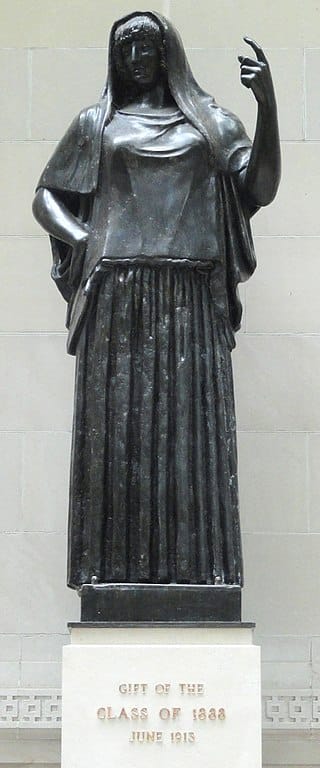Hestia is a goddess of the first Olympian generation. She was the eldest daughter of the Titans Rhea and Cronus and sister to Zeus, Poseidon, Demeter, Hera, and Hades. Immediately after their birth, Cronus swallowed all his children except the youngest, Zeus, who forced Cronus to disgorge his siblings and led them in a war against their father and the other Titans.

Hestia Greek Goddess
Hestia rejects the marriage pursuits of Poseidon and Apollo and swears herself to perpetual virginity. She thus rejects Aphrodite's values and becomes, to some extent, her chaste, domestic complementary or antithesis. Aphrodite could not bend or ensnare her heart.
Hestia Greek Goddess: Role
Hestia was a goddess of the hearth or fireplace and was represented in every altar sacrifice and home fire. Her status directly reflects the importance of fire in a primitive culture.
However, she is a goddess that is often left out and replaced by Dionysus. Her place in the pantheon of Gods shifts a bit depending on the time period.
Since fire is a purifying element, it is only natural that Hestia is pure as well. She took a vow of chastity and often is portrayed as a middle-aged woman in modest attire. The legend has it that she became a virgin to keep the peace between Apollo and Poseidon, who wanted to marry her and was willing to compete for her.
The ambiguities in Hestia's mythology are matched by her indeterminate attributes, character, and iconography. She is identified with the hearth as a physical object and the abstractions of community and domesticity, but portrayals of her are rare and seldom secure. In classical Greek art, she is occasionally depicted as a woman, simply and modestly cloaked in a head veil. She is sometimes shown with a staff in hand or by a large fire. She sat on a plain wooden throne with a white woolen cushion and did not trouble to choose an emblem for herself. In some stories, Hestia did not have a throne at all. In others, she gave up her throne for Dionysus.
